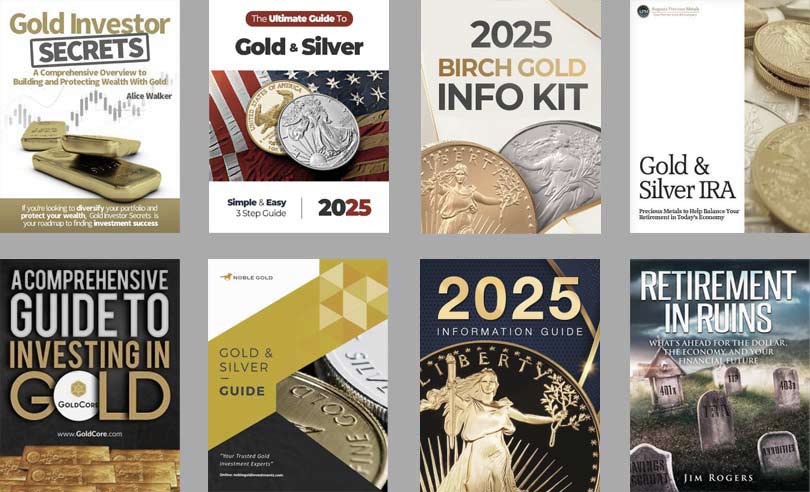Gold shatters $3,400 and forecasters set their sights on $4,000
 Bullion.Directory precious metals analysis 23 April, 2025
Bullion.Directory precious metals analysis 23 April, 2025
By Peter Reagan
Financial Market Strategist at Birch Gold Group
And this time, analysts aren’t even trying to explain the reasons. Everyone instead seems to concur that gold is doing its natural thing, as Schroders’ commodities fund manager Jim Luke wonders: Is gold the new U.S. dollar?
We just have to start with the end here and rush to Luke’s forecast before going over some of his finer points:
All things considered, gold at $5,000 an ounce by the end of the decade did not feel outlandish twelve months ago. It feels frankly conservative now. Fundamentally, this is because gold is rallying as a monetary asset, not as a commodity asset.
This recasting of gold as a monetary, rather than a commodity, asset – exacerbated by the events of the past few weeks – offers pause for thought on the long-term future role for gold in the international monetary system, and its potentially enhanced function as the ultimate safe-haven asset.
A big forecast by a big name. But he’s far from alone, as we’ll see.
Side note: I like that Luke considered gold not just in 2025 and 2026, but throughout the entire decade. Why? This run has truly been unlike anything we’ve seen in the last 50 years, and it makes sense to extrapolate into the future. In other words, this isn’t a rally, it’s a trend. Historically, trends are much more sustained.
What looked like a global crisis spike proved to be anything but. The lockdowns went away, but gold kept going higher and higher. There is no obvious global crisis now, but gold is almost double its pandemic price… And almost nobody is able to put together a convincing story that fully explains this.
Luke is certainly onto something, as he dives deep into the consideration of gold as money in an increasingly volatile global landscape.
Luke focuses on fundamentals, which I’ve been urging readers to do for the better part of two (if not five) years now.
Luke’s premise is we are no longer in a U.S. dollar dominated world, despite efforts to keep appearances. Factions like China and Russia, sometimes together and sometimes separately, are openly vying for power and control. (Hmmm, sounds like the Rio Reset to me…)
The gross mismanagement of Western economies has created this situation. As much as some folks like to pretend, Luke tells it how it is: Unsustainable debt and ongoing deficit spending have always led to inflation at home and currency debasement abroad. This time is not different.
Luke says that tariffs tie into this dynamic. President Trump’s quest for balanced trade is causing a repatriation of international capital and further selling of U.S. assets globally. Selling puts downward pressure on asset prices, while newly liberated capital goes in search of a new safe haven.
As far as other forecasters go… ANZ is staying on the aforementioned conservative side by targeting $3,600 by year’s end. Citi sees $3,500 in the next three months – I expect they’ll be updating that forecast within a week.
But it’s the $4,000 forecasts that demand our attention. Their numbers are growing, and they’re coming from big names in the industry.
Goldman Sachs is targeting $4,000 by mid-2026. In other words, gold’s run seems ready to extend well into next year, at least.
If you don’t already own gold, I strongly urge you not to wait for a lower price. Because we may never see gold’s price fall below $3,000 ever again.
Judy Shelton disses Federal Reserve; gold is the key to fixing our economic struggle
Judy Shelton continues to vie for the title of the Most Dangerous Woman in Finance. (Dangerous for explaining unbacked currency and its terrible effects on our lives – central bankers HATE her.)
She recently joined the Soar Financially show with some big talking points. Watch here:
The former economic advisor to President Trump and Senior Fellow at the Independent Institute think-tank is one of the most high-profile supporters of the gold standard, second only to my friend Dr. Ron Paul. These days, I believe she’s finally getting some of the attention she deserves.
An update like this from Shelton was long overdue. Here’s what the conversation covers:
- The Federal Reserve is both too prominent and too powerful – and we must watch them closely
- The Fed itself has no accountability, even though they hold all the cards when it comes to the dollar’s present and future value
- How the Fed “monetizes” debt (in other words, prints money) and manipulates interest rates while wrecking our purchasing power
- Exactly how “stimulus” funds end up in the biggest pockets first, and how the rich get even richer
- Finally (and I cannot stress this enough): 2% annual inflation isn’t price stability! 0% annual inflation is
Shelton has an agenda. She wants a Congressional inquiry into the Fed. She wants clear limits on Congress’s deficit spending – the debt ceiling certainly isn’t doing anything.
Furthermore, she agrees with Trump’s intention to restore American industry and manufacturing, once the bedrock of our economy. She says the Liberation Day tariffs are an attempt to enforce a renaissance of American industry – from the top down, obviously, rather than from a free market angle. She agrees that the entire world (emerging market nations especially) manipulate their currencies to gain massive trade advantages – impoverishing their own citizens in the process. (But hey, what’s good for the state is good for the citizen, right?)
Shelton says the U.S. should lead the world again – this time, by issuing government debt convertible into gold. She points out we’re in a unique position to do this! Our official 8,133 metric ton gold reserve is the world’s largest, after all – with a current market value of some $875 billion. (Future readers, check my math – 257,206 troy ounces gold times today’s spot price of gold. Who knows? By the time you see this, that number could be over $1 trillion…)
The idea is refreshingly straight-forward: When the Treasury Department sells an IOU to anyone, make it redeemable in either dollars or gold. Period. That’s it!
There’s an obvious, built-in incentive to manage the dollar’s purchasing power there. And it speaks to Treasury Secretary Bessent’s comments about “monetizing the asset side” of the federal government’s resources…
First though, Shelton demands a full, transparent audit of our nation’s gold reserves.
Asked about gold’s recent price run, Shelton doesn’t have much to say. To her, it’s obvious why the only uninflatable, historic form of money is rising in price. Though she does reference Alan Greenspan:
Gold is a currency. It is still, by all evidence, a premier currency, that no fiat currency, including the dollar, can match.
Alan Greenspan
She notes that gold’s price is going up because everyone from private investors to individual U.S. states to central banks buy gold as a store of value – while merely speculating in paper assets.
Silver notches another record year of demand (yet prices somehow remain stagnant)
Silver can’t catch a break – in price, or in sentiment.
Despite an unbelievable gold-to-silver ratio that exceeded 100:1 even before gold’s latest all-time high price, all analysts talked about was how hard tariffs were going to hit silver’s price. Silver: First victim of a global trade war and the subsequent industrial slowdown…
But what of the price catch-up? Historically, when gold soars, silver follows (with some delay) and then outperforms. We’ve seen the first half of this equation already. When will prices finally normalize to something like the post-1972 average of 65:1?
Nobody’s talking about it, but something’s got to give… Silver has just wrapped up another year of record demand, up 6% in 2024 to 680.5 million ounces.
It’s the fourth consecutive year of record demand for physical silver, despite the increasingly-stagflationary global economy.
It was also the fourth consecutive year of supply deficit, which has now climbed to 148.9 million ounces annually.
The Silver Institute has some concerns regarding how industrial demand will fare this year. But I have to ask: why does it matter?
Right now, the price of silver is clearly disconnected from everything. Starting with common sense, and then moving onto fundamentals. Silver should have exploded during these last four years because gold was moving up immensely. Because silver supply is deep into deficit territory. Because it’s somehow still below 1980s prices. There are a dozen reasons.
So today, if industrial demand dips, and silver’s price follows, we are to believe the two are correlated? I don’t buy it. In a fair and free market, silver would already be hitting analysts’ fair value targets over $100 at least. I don’t want to go all tinfoil hat on you – but it’s hard to take silver’s price seriously after doing even the most cursory research.
Personally, I’m hugely bullish on silver. I see it as a performance asset – unlike gold, which I consider a form of saving rather than “investing.” I believe that the choice to buy silver today will be richly rewarded in the months and years ahead.
Peter Reagan

Peter Reagan is a financial market strategist at Birch Gold Group, one of America’s leading precious metals dealers, specializing in providing gold IRAs and retirement-focused precious metals portfolios.
Peter’s in-depth analysis and commentary is published across major investment portals, news channels, popular US conservative websites and most frequently on Birch Gold Group’s own website.
This article was originally published here











 Material provided on the Bullion.Directory website is strictly for informational purposes only. The content is developed from sources believed to be providing accurate information. No information on this website is intended as investment, tax or legal advice and must not be relied upon as such. Please consult legal or tax professionals for specific information regarding your individual situation. Precious metals carry risk and investors requiring advice should always consult a properly qualified advisor. Bullion.Directory, it's staff or affiliates do not accept any liability for loss, damages, or loss of profit resulting from readers investment decisions.
Material provided on the Bullion.Directory website is strictly for informational purposes only. The content is developed from sources believed to be providing accurate information. No information on this website is intended as investment, tax or legal advice and must not be relied upon as such. Please consult legal or tax professionals for specific information regarding your individual situation. Precious metals carry risk and investors requiring advice should always consult a properly qualified advisor. Bullion.Directory, it's staff or affiliates do not accept any liability for loss, damages, or loss of profit resulting from readers investment decisions.

Leave a Reply